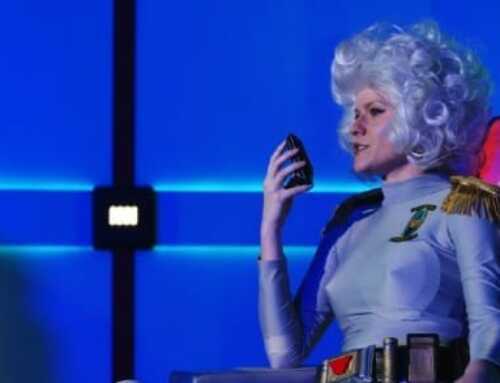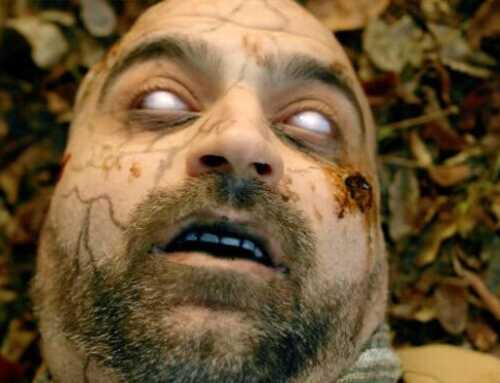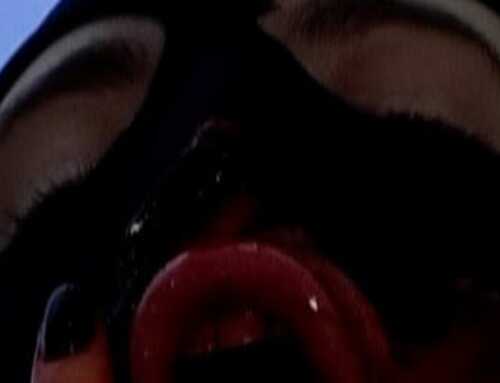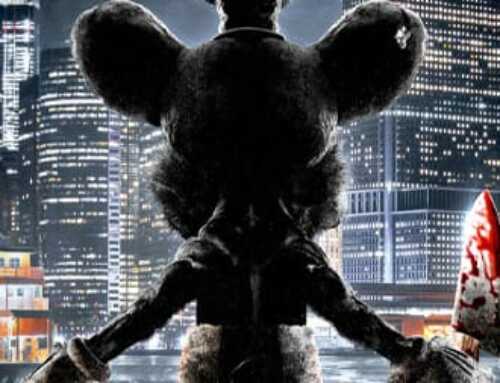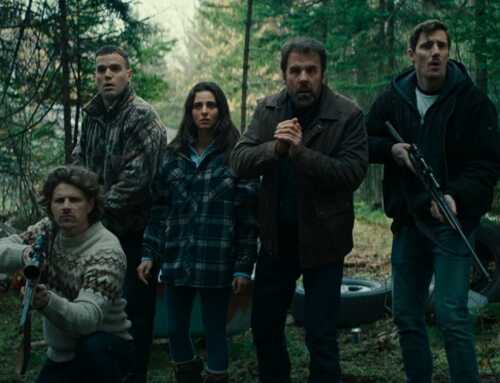I could explain the plot of After Blue (Dirty Paradise) easily enough. It’s decently straightforward: On a planet called After Blue, the survivors of a dying Earth have found a new home. A young woman from a French colony (Paula Luna) saves a Polish woman called Kate Bush (Agata Buzek), only to realize she may have unleashed a monster when Kate Bush kills her three friends. The villagers storm into the home of the girl, Roxy, and her mother (Elina Löwensohn), the town hairdresser, and insist that as punishment for causing their daughters to be killed, Roxy and her mother must leave the village, only returning after they have killed Kate Bush.
The two set out for the mountains, besieged by bad weather and worse people. Roxy is haunted by visions of her dead friends, and the saddlebags of the horse provided for her and her mother have been filled with dirt instead of provisions. But, in the mountains, the two find shelter in an old mine, and companionship with an artist who lives away from the rest of society (Vimala Pons). The hunt for Kate Bush no longer seems so daunting, but looks can always be deceiving.
The execution of this plot is very hard to explain. You know how in Anna Biller’s The Love Witch, everything was stylized to perfectly mimic the films of the 1970s, even though it was made in 2016? After Blue is a lot like this, but mimicking the low-budget indie sci-fi of the 1980s, right down to feeling like an absolute acid trip to watch.
As you might be able to guess from the “Dirty Paradise” subtitle (and the distributor having a name like “Altered Innocence”), the film also mimics the 1980s “cult movie or softcore porno?” approach to filmmaking. This is what really made it hard to get through for me. Much like my least favorite Vincent Price movie, Cry of the Banshee, After Blue has an insane amount of fairly graphic sexual violence that feels like it’s just there for shock value. The story definitely didn’t need it. The tentacles were more than enough to make this a Weird Sexy Film.
I was also uncomfortable with the bioessentialism built into the plot. Apparently, After Blue is populated entirely by women because its atmosphere killed anyone without ovaries. This didn’t actually contribute to the plot in any meaningful way, and the execution feels very exploitative. There are no transgender characters, or exploration of gender at all, so it just feels like an excuse to fetishize lesbians. The writer and director, Bertrand Mandico, is not a woman, and I don’t think he was the best person who could have handled this story.
After Blue is a very pretty movie, with a great deal of effort put into set design, lighting, and camerawork. The quirks like designer label firearms, crystal shapes utilized in unlikely ways, and a lead villain who is inexplicably named after an eclectic British musician were endearing. But it was near-constant with its attempts to make me uncomfortable for no good reason. Sometimes movies should be uncomfortable. But this one didn’t need to be and was absolutely the worse for it.
4.5 out of 10
| After Blue | ||
| RATING: | NR |
AFTER BLUE (DIRTY PARADISE) OFFICIAL TRAILER (2021) |
| Runtime: | 2 Hrs. 7 Mins. | |
| Directed By: | ||
| Written By: | ||


